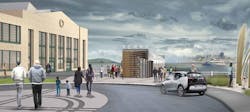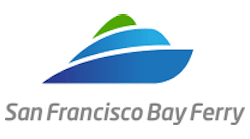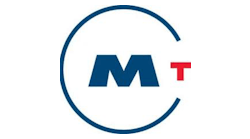WETA Breaks Ground on Richmond Ferry Terminal
The San Francisco Bay Area Water Emergency Transportation Authority and the city of Richmond are breaking ground on the Richmond Ferry Terminal. The facility is located at the southern point of the Ford Peninsula in Richmond, adjacent to the Ford Assembly Plant building. The construction project is the final step toward the launch of new ferry service between Richmond and San Francisco, expected to begin in September 2018. The new service will provide a critical expansion to regional ferry operations, help alleviate traffic congestion and increase WETA’s emergency response capabilities.
“The new Richmond terminal marks another major milestone in our expansion of ferry service across the Bay,” said Nina Rannells, WETA executive director. “On behalf of the WETA Board of Directors and staff, I’d like to thank the city of Richmond and Mayor Butt for their partnership in putting this project into action. It’s an exciting day for Richmond and for Bay Area commuters.”
The Richmond Ferry Terminal Project includes the construction of an ADA-compliant gangway and ramping system, float and piles, passenger shelter, and development and reconfiguration of a 362-space paved parking lot. WETA will also install a new ADA-compliant kayak launch ramp. Ferry service between Richmond and San Francisco is expected to begin in September 2018, with three morning and four afternoon departures.
“Adding Richmond to the commuter ferry network has been an endeavor that I and other transit advocates have worked on for decades. It’s hard to believe we are in the home stretch,” said Richmond Mayor Tom Butt. “The excitement and anticipation for the ferry has been growing rapidly. Residents, businesses, employees and commuters in the East Bay are more than ready to take advantage of this new connection to downtown San Francisco.”
Joining Butt and Rannells at the groundbreaking are residents and civic, government and business officials, including Jim Wunderman, WETA vice chair and Bay Area Council president and CEO; State Senator Nancy Skinner (D-Berkeley); Assemblymember Tony Thurmond (D-Richmond); Federal D. Glover, MTC commissioner and chair of the Contra Costa County Board of Supervisors; and John Gioia, supervisor of Contra Costa County (District One) and member of the California Air Resources Board.
MTC is providing $12 million in Regional Measure 2 bridge toll funds to help purchase two ferries for the new service. Passed by Bay Area voters in 2004, RM2 raised tolls by $1 on the region’s seven state-owned toll bridges in order to finance highway, public transit, and bicycle and pedestrian projects to relieve congestion in the bridge corridors and their approaches.
The capital project is also funded by State Proposition 1B and U.S. Department of Transportation funds, with operational funding from Contra Costa County Measure J and fare revenue. The total project cost for terminal and landside construction is estimated at between $20 million.
The project is one example of WETA’s strategic efforts to address increased demand for ferry service and expand its capacity and operations. It is investing $465 million in assets — including new terminals, maintenance facilities and vessels. WETA’s 2016 Strategic Plan outlines a vision for 44 vessels, 16 terminals, 12 routes and a 740 percent increase in peak capacity by 2035. Recently, WETA broke ground on the Downtown San Francisco Ferry Terminal Expansion Project and launched two new state-of-the-art 400-passenger vessels, the M.V. Hydrus and the M.V. Cetus.




